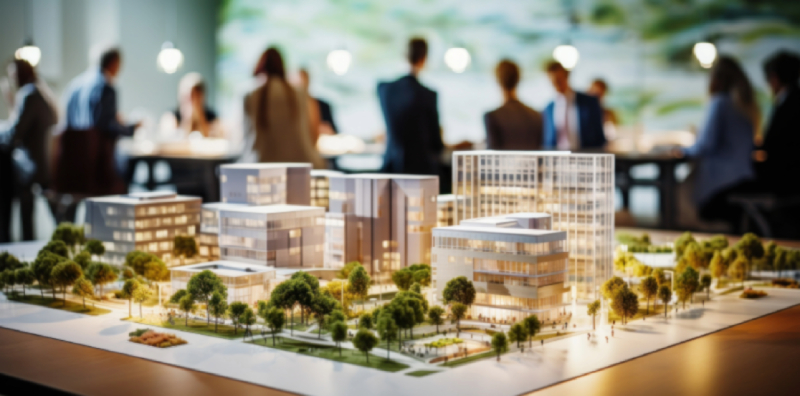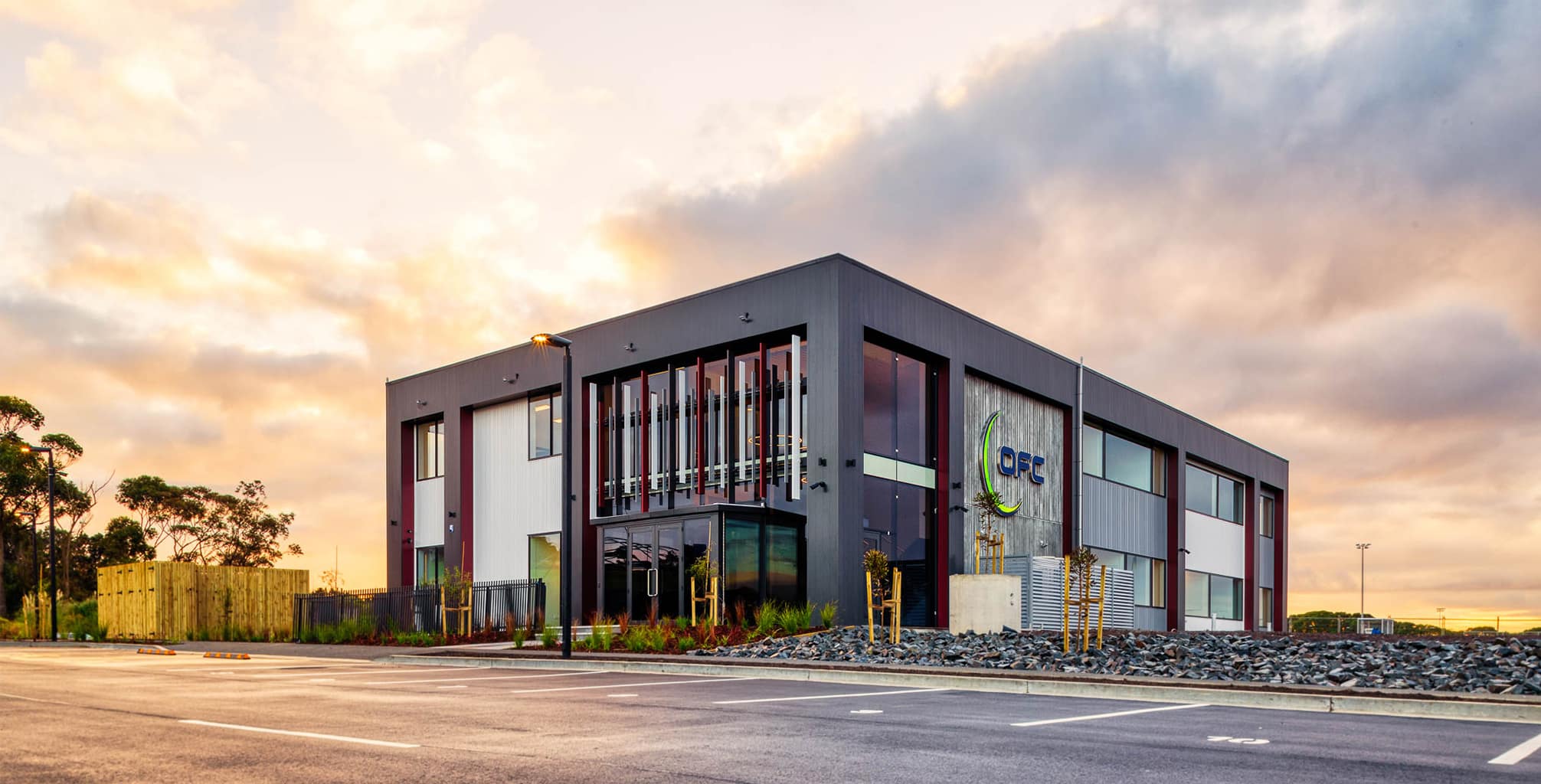Why Are commercial architects More Valuable Than Other Types of Designers?
Discover the Ingenious Solutions Used by Commercial Architects for Your Following Task
Commercial architects play an essential role in forming the constructed setting. They mix functionality with aesthetic allure, creating areas that reverberate with brand name identity. These professionals utilize cutting-edge style options, sustainable methods, and advanced innovations to improve user experiences. Their joint technique assurances positioning with client visions and operational demands. The degree of their services typically expands past design. The following action in recognizing just how these architects browse complicated project demands may shock you.
Comprehending the Role of Commercial Architects
The role of industrial architects might vary depending on the particular project, their key feature rotates around creating practical and visually enticing rooms for organizations. These specialists are charged with comprehending the special requirements of each client, whether it be a store, workplace building, or commercial facility. They perform comprehensive website evaluations and collaborate with stakeholders to assure that the layout lines up with the company purposes and brand name identity.Commercial architects additionally browse various governing demands, securing conformity with zoning laws and building ordinance. Their expertise expands to producing sustainable styles that advertise energy performance and environmental responsibility. In addition, they handle the project's timeline and spending plan, coordinating with contractors and designers throughout the construction procedure. By blending creative thinking with technological understanding, commercial architects play a crucial function in changing conceptual concepts into concrete facts, eventually boosting the functionality and charm of business areas.
Cutting-edge Design Solutions for One-of-a-kind Spaces
As commercial rooms significantly demand distinctiveness to stand apart in competitive markets, innovative layout solutions have actually become important for architects. These professionals utilize their imagination and technological expertise to craft one-of-a-kind settings that show brand name identification and boost user experience. By integrating cutting-edge modern technology and products, business architects can transform regular areas right into charming venues that engage clients and influence employees.Architects employ various strategies, such as adaptive reuse, which revitalizes existing structures while maintaining their historic significance. They additionally discover non-traditional layouts and multifunctional areas that accommodate diverse needs, making sure flexibility for future growth.Furthermore, the incorporation of biophilic design-- bringing nature indoors-- produces inviting environments that promote well-being - commercial architects. This attention to information in cutting-edge style not only addresses aesthetic concerns however also cultivates neighborhood and partnership. Eventually, these tailored remedies permit organizations to grow in an ever-evolving landscape, establishing them besides competitors
Sustainable Design Practices
Lasting design methods have emerged as a critical focus for industrial architects seeking to create impactful layouts that resonate with environmental stewardship. These techniques prioritize using eco-friendly resources, energy effectiveness, and minimal waste, mirroring a commitment to decreasing the ecological impact of buildings. Architects incorporate materials that are sustainably sourced or reused, making certain that building and construction techniques align with eco-friendly principles.Furthermore, the combination of green roofs and wall surfaces improves biodiversity while improving power efficiency. Reliable water monitoring systems, such as rain harvesting, add to sustainability by preserving water sources. All-natural air flow and daylighting strategies are likewise employed to maximize interior settings, reducing dependence on fabricated heating and lighting.
Integrating Technology in Architectural Layouts
A raising number of business architects are accepting technology as a transformative element in building design. By leveraging innovative software devices such as Structure Information Modeling (BIM), architects can create in-depth 3D representations of tasks, enabling boosted visualization and collaboration amongst stakeholders. This technology facilitates real-time adjustments, minimizing mistakes and improving the design process.Additionally, architects are incorporating smart building modern technologies into their styles, which improve power performance and owner convenience. Attributes such as automated lighting, environment control, and security systems can be perfectly integrated, promoting sustainable practices and reducing operational costs.The use online and increased fact additionally permits customers to experience styles prior to building and construction starts, giving important insights into spatial relationships and visual selections. Eventually, the combination of innovation in architectural designs not just promotes advancement however also guarantees that tasks are carried out with precision and aligned with contemporary demands.

Job Management and Control Solutions
Effective task administration and sychronisation services are important for the effective execution of industrial architectural projects. These solutions assure that all elements of a job, from first layout to final building, are perfectly incorporated. Commercial architects play a considerable duty in coordinating between different stakeholders, consisting of clients, service providers, Get the facts and suppliers, to preserve clear interaction and placement on task goals.By executing structured methods, architects can take care of timelines, budgets, and resources successfully, minimizing delays and expense overruns. They make use of task management software application and devices to track progression, take care of documentation, and help with partnership amongst team members.Additionally, these solutions consist of threat analysis and reduction approaches, validating potential difficulties are recognized and addressed proactively. The outcome is a streamlined process that enhances total job performance and quality, inevitably bring about a successful result that satisfies the customer's vision and expectations.
Regulative Compliance and Zoning Support
Effective regulatory conformity and zoning support are crucial for the success of any kind of commercial project. Architects should possess a deep understanding of local laws and zoning regulations to assist customers with the complexities of the authorization process. This knowledge not only assures adherence to lawful demands but also assists optimize project layout and capability.
Navigating Local Rules
How can commercial architects ensure their styles align with local laws? By remaining knowledgeable about the ever-evolving landscape of building ordinance and regional statutes, architects play a vital role in making sure compliance. They conduct complete research study to comprehend the particular regulations regulating products, safety and security standards, and building approaches relevant per job. Working together very closely with local authorities, commercial architects can navigate through the intricacies of regulatory structures properly. They likewise facilitate essential licenses and examinations, simplifying the authorization process. This aggressive strategy not only reduces prospective lawful problems yet also improves job effectiveness. Eventually, their competence in steering neighborhood laws encourages customers to realize their go right here vision while adhering to all required standards and guidelines.
Zoning Law Competence
Zoning regulation expertise is important for commercial architects steering through the complexities of land usage laws. These architects possess comprehensive understanding of local zoning codes, which govern residential or commercial property development, land usage, and structure specs. By comprehending these policies, they help customers navigate the frequently intricate authorization procedures required for you could try this out construction tasks. Their expertise guarantees compliance with zoning laws, minimizing the risk of project delays or legal complications.Additionally, commercial architects supply useful help in acquiring needed licenses and variations, assisting in smoother communications with regional authorities. They likewise provide strategic referrals to enhance website design and take full advantage of the potential of a property while sticking to zoning limitations. Inevitably, their zoning legislation proficiency plays an essential role in the successful realization of industrial projects.
Collective Strategies With Clients and Stakeholders
Effective commercial style depends upon the ability to promote strong partnership with clients and stakeholders throughout the design process - commercial architects. Architects take part in open dialogues, ensuring that all celebrations' visions and requirements are incorporated into the project. This collective strategy starts in the preliminary stages, where architects conduct workshops and brainstorming sessions, permitting customers to verbalize their goals and concerns.Stakeholder input is just as crucial; architects typically arrange meetings with community members, city governments, and various other pertinent entities to collect diverse point of views. By utilizing visualization tools, such as 3D modeling, architects help with better understanding and communication.This repetitive responses process not only boosts style top quality but additionally builds depend on, bring about even more effective end results. Inevitably, the joint philosophy of commercial architects transforms ideas into functional spaces that reflect the aspirations of clients and the broader community, guaranteeing a harmonious partnership throughout the task lifecycle

Regularly Asked Concerns
What Is the Regular Timeline for a Business Style Task?
The regular timeline for a business architecture project differs, usually extending 6 to 18 months. Variables influencing this duration include task intricacy, governing authorizations, and client responsiveness, affecting each phase from design to construction conclusion.
Just How Do Commercial Architects Fee for Their Solutions?
Commercial architects usually charge based upon project extent, complexity, and size. Usual charge frameworks include per hour prices, repaired costs, or percentage-based charges computed from the overall building expense, guaranteeing transparency and positioning with customer expectations.
Can Commercial Architects Assist With Inside Design?
Commercial architects can indeed assist with indoor design, integrating performance and appearances. Their know-how guarantees cohesive areas that line up with architectural vision, boosting individual experience while meeting regulative requirements and customer goals via cutting-edge layout remedies.
What Kinds of Clients Do Commercial Architects Usually Work With?
Commercial architects normally team up with varied customers, consisting of businesses, government entities, universities, and charitable companies (commercial architects). Each customer looks for customized building options to satisfy certain useful and visual needs for their tasks and settings
Exactly How Do Commercial Architects Keep Upgraded With Style Patterns?
Commercial architects stay updated with design trends via continual education and learning, participating in sector meetings, participating in expert networks, and looking into emerging innovations. They likewise work together with other specialists to obtain understandings into innovative products and style methods.